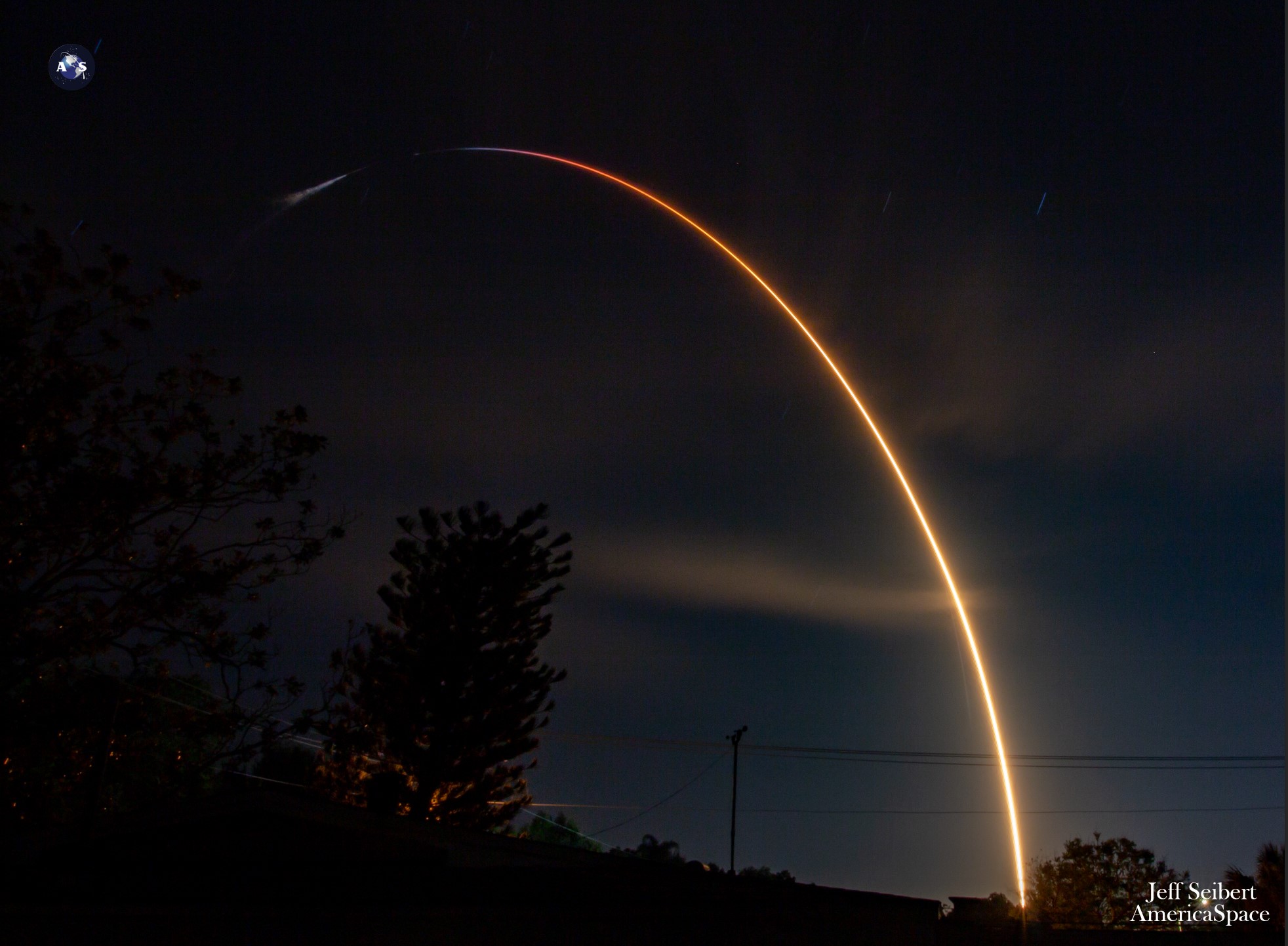
SpaceX is gearing up for a “double-niner” start to the week, as two veteran Falcon 9s on opposite coasts of the United States stand primed for their respective ninth launches on Monday. And if all goes well, the second of the two missions will mark the Hawthorne, Calif.-based organization’s 200th successful landing of a Falcon-class booster on either solid ground or offshore in a little less than 7.5 years.

Ever since the first Falcon 9 touched down on terra firma, at Cape Canaveral’s Landing Zone (LZ)-1 in December 2015, followed by the first successful on-point return of a booster to the expansive deck of an Autonomous Spaceport Drone Ship (ASDS) in April 2016, there have been 43 successful “land” landings and 155 “oceanic” landings. The fleet completed its most recent land landing last month, after the “new” B1080 booster successfully lifted Ax-2 crew members Peggy Whitson, John Shoffner, Ali Al-Qarni and Rayyanah Barnawi on the first leg of their nine-day research expedition to the International Space Station (ISS), and the last landing on a drone ship occurred last Monday when the CRS-28 Cargo Dragon took flight on its own month-long trip to the sprawling orbital complex.
Tomorrow’s dual launches—spaced only 14 hours apart—are destined to continue this land-and-sea landing tradition, with the first of the pair targeting a touchdown in the Atlantic Ocean on the ASDS “Just Read the Instructions” and the second aiming to alight on solid ground at Landing Zone (LZ)-4 at Vandenberg Space Force Base, Calif. In readiness for the Space Coast launch, JRTI put to sea out of Port Canaveral last Wednesday, bound for a recovery position about 400 miles (640 kilometers) offshore.
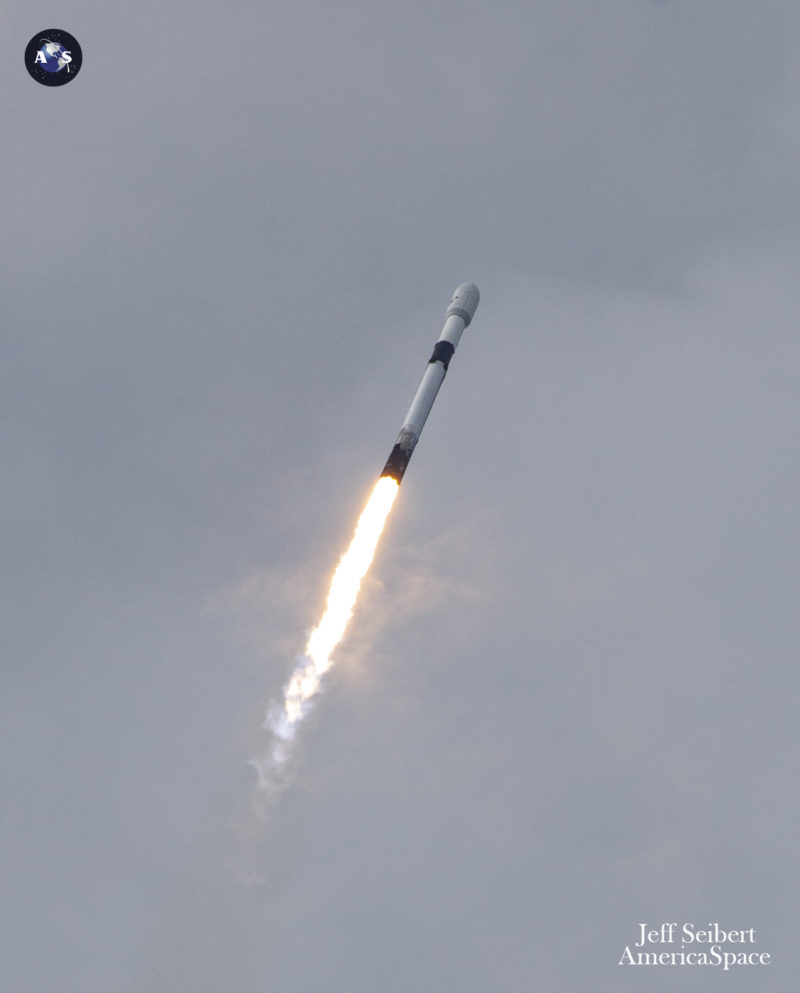
Flying first is the eight-times-used B1073 booster, which entered service in May of last year and has so far lofted 178 Starlink low-orbiting internet communications satellites, plus the SES-22 and Amazonas Nexus geostationary communications satellites and a lunar-bound mission with Japan’s Hakuto-R lander, the United Arab Emirates (UAE) Rashid rover and NASA’s water-ice-seeking Lunar Flashlight. Last March, on her seventh mission, she became the most flight-seasoned Falcon 9 to carry a payload—human or cargo—to the ISS.
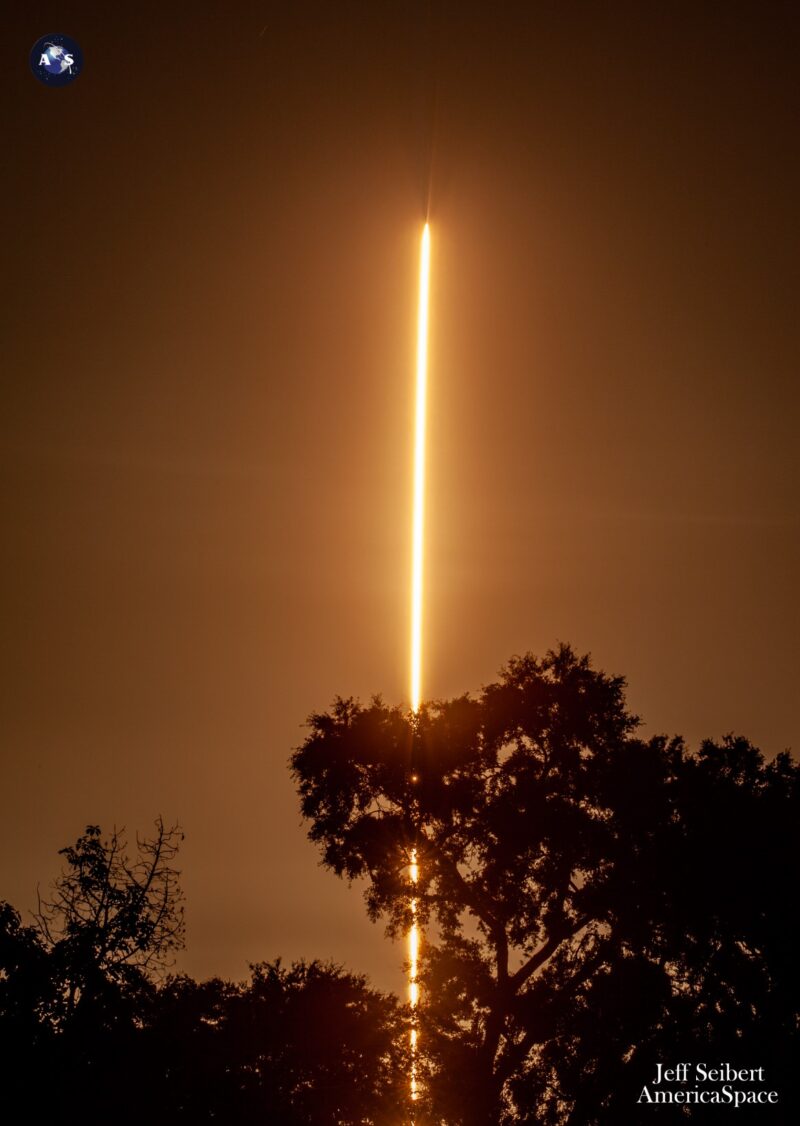
Photo credit: Jeff Seibert AmericaSpace
For her ninth launch, B1073 will carry 53 more Starlinks to orbit and is tracking a pair of T-0 points at 3:10 a.m. and 4:52 a.m. EDT Monday, following by two backup opportunities at 2:45 a.m. and 4:26 a.m. Tuesday from storied Space Launch Complex (SLC)-40 at Cape Canaveral Space Force Station, Fla. And after the intractable Florida weather blighted earlier Falcon 9 missions late last month and earlier in June, the forecast for Monday and Tuesday promises fair skies, following winds and—with the exception of the potential violation of the Cumulus Cloud Rule—a 90-percent “Go” probability.
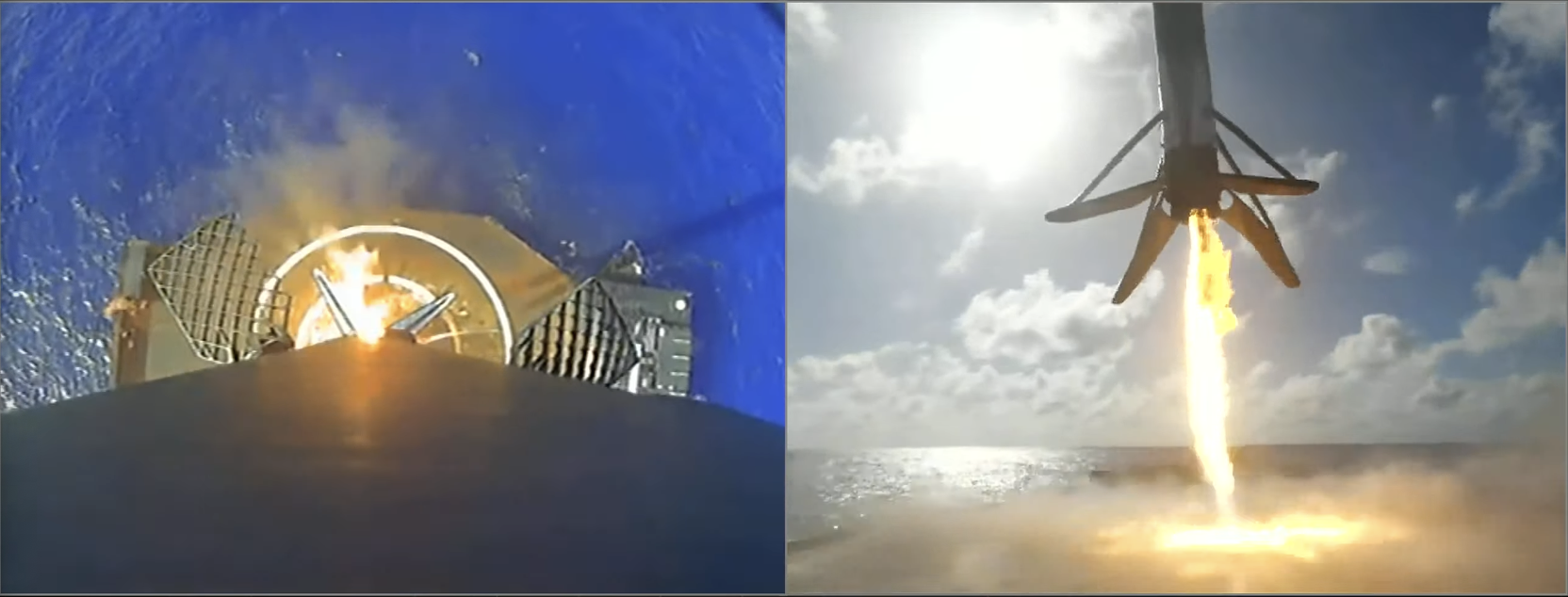
“The combination of deep offshore flow and the early morning launch window will allow for generally favorable weather both the primary and backup days,” noted the 45th Weather Squadron at Patrick Space Force Base in a Saturday update. “Afternoon shower and storm activity along the Space Coast will diminish after sunset, then offshore showers will develop over the Gulf Stream.”
But with much of this activity expected to remain over the Atlantic waters in the overnight and early morning hours, “due to westerly flow”, the probability of acceptable conditions at T-0 on both Monday and Tuesday stands at about 90 percent. There is a small risk of violating the Cumulus Cloud Rule.
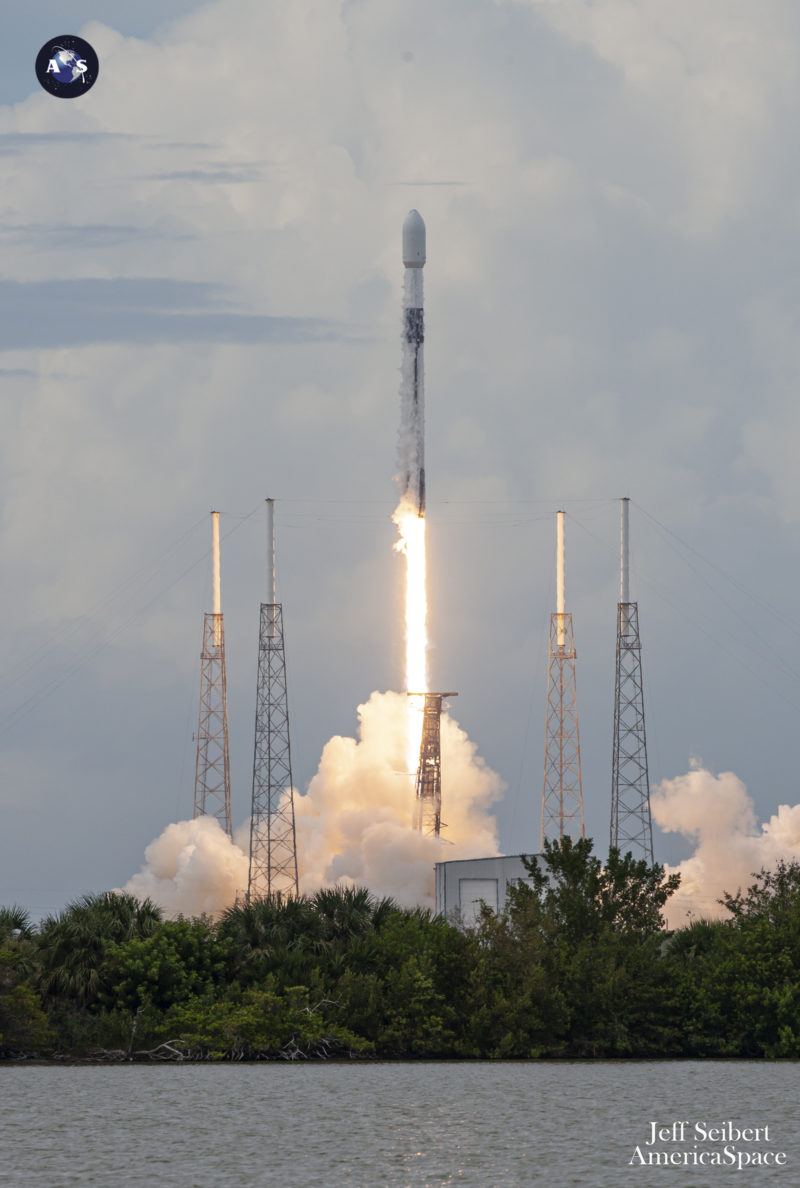
After liftoff, B1073 will power the Falcon 9 stack uphill for the first 2.5 minutes of flight, before returning to land on JRTI’s deck to wrap up the 199th successful landing of Falcon-class hardware. The second stage will then execute a standard six-minute “burn” of its Merlin 1D+ Vacuum engine to deliver the 53 Starlinks into orbit, with deployment targeted about 65 minutes into the mission.
Since May 2019, well north of 4,400 production-design Starlinks have been placed into orbit, with 877 launched this year alone. The small satellites facilitate high-speed and low-latency internet provision across more than 50 sovereign nations and international markets spanning North and South America, Europe, Asia, Oceania and Africa. In the last few weeks alone, Panama and Mozambique officially signed up to Starlink.
Florida-based intercity operator Brightline revealed last month that it has adopted the network on its trains, marking the first passenger rail service in the world to do so. And El Salvador’s Ministry of Education has begun integrating Starlink capability into its schools to help close the digital divide between urban and remote rural communities.

Following tomorrow morning’s pre-dawn launch from Florida, attention will turn to Space Launch Complex (SLC)-4E on the West Coast, where yet another eight-times-flown booster—the veteran B1071, a dedicated “Vandenberg Falcon” which entered service in February 2022—is readying to deliver 72 customer payloads uphill on the mixed-manifest Transporter-8 mission. Liftoff is targeted for a 57-minute “window” that opens at 2:19 p.m. PDT Monday, followed by a backup opportunity at the same times Tuesday.
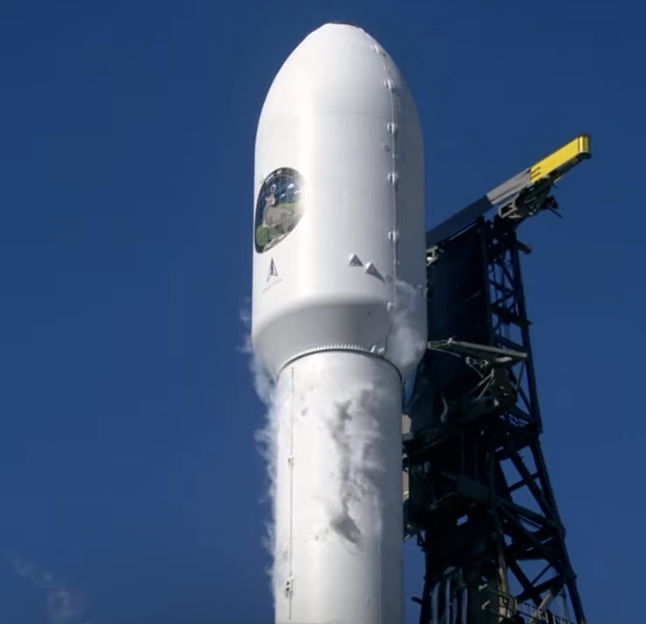
As its name implies, this will be SpaceX’s eighth launch of a Transporter payload “stack”. A pair of initial missions in January and June of 2021, then three more in January, April and May of 2022 and most recently Transporter-6 and 7 last January and April, lifted a total of 600 payloads—including miniaturized CubeSats and PocketQubes—to support disciplines from Earth observation, remote sensing and meteorology to technology, communications and navigation and from Signals Intelligence (SIGINT), education and amateur radio to Internet of Things (IoT), Ultra-High-Definition (UHD) television streaming and biological research, on behalf of dozens of sovereign nations.
Notably, Transporter-1’s haul of 143 small satellites, totaling 11,000 pounds (5,000 kilograms), still stands as the greatest number of discrete payloads ever orbited by a single U.S. orbital-class launch vehicle. Last year’s Transporter-5 supported a first-of-its-kind robotic cutting of metals demonstration, in furtherance of NanoRacks’ future Space Outpost design concepts. And the Transporter program has facilitated the launches of the maiden national satellites for Albania, Kuwait and Armenia.
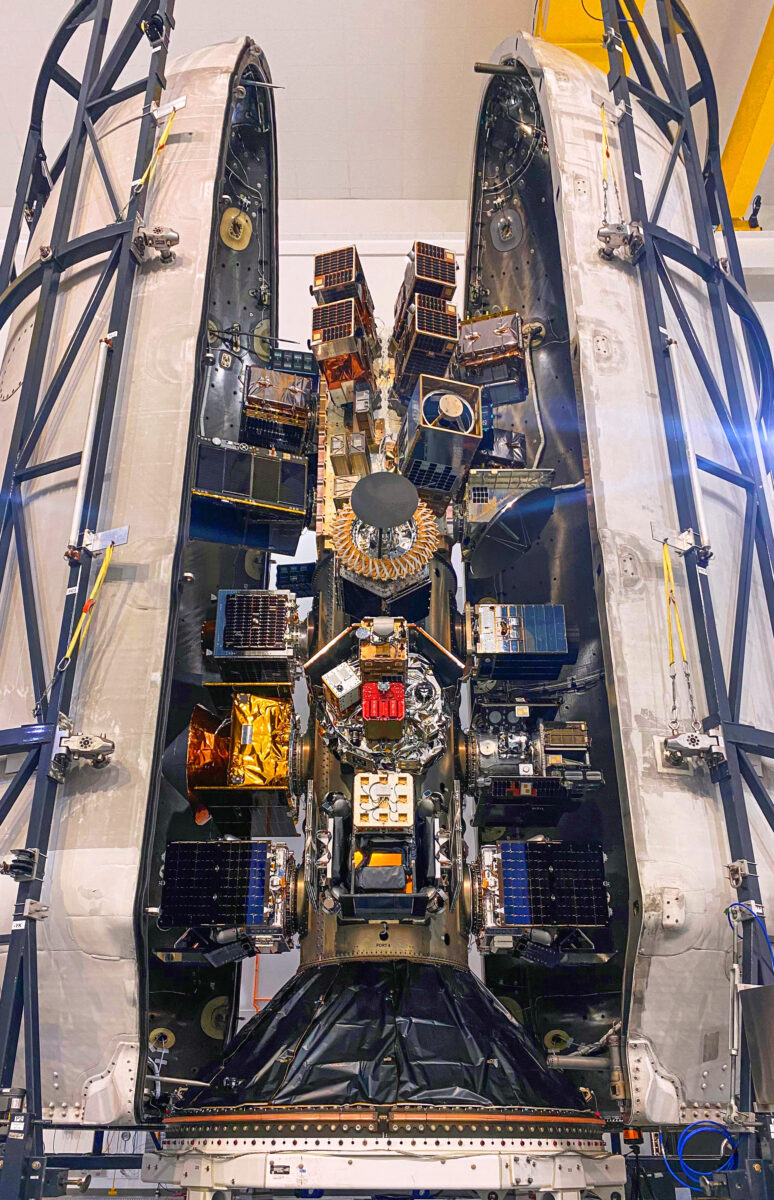
Aboard Transporter-8 will be 72 payloads from multiple sovereign nations, to be deployed over a 25-minute period, beginning about an hour after tomorrow’s launch. A notable frequent flyer is Italian firm D-Orbit, whose next ION Satellite Carrier Vehicle (SCV-011)—nicknamed “Savvy Simon”—will be deployed at 80 minutes after tomorrow’s launch to deliver its own suite of passenger payloads into specific orbital locations.
Also heading uphill on Transporter-8 are payloads from Spain, Germany, the United Kingdom, Luxembourg, Argentina, India, Finland, Australia, Japan, Chile, Israel and the United States. These cover a range of disciplines from IoT to atmospheric methane monitoring, from Earth observations to technology demonstrations, from communications to space debris management, as well as several reconnaissance payloads flying on behalf of the Defense Advanced Research Projects Agency (DARPA).





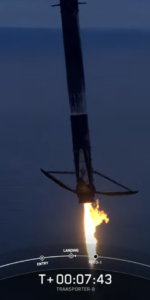
3 Comments
3 Pings & Trackbacks
Pingback:SpaceX is aiming for a double launch on Monday
Pingback:SpaceX Wraps Up 200th Booster Landing, Second Launch in 14 Hours - AmericaSpace
Pingback:After Daylong Delay, Vandenberg Falcon Launches, Lands for Tenth Time - AmericaSpace